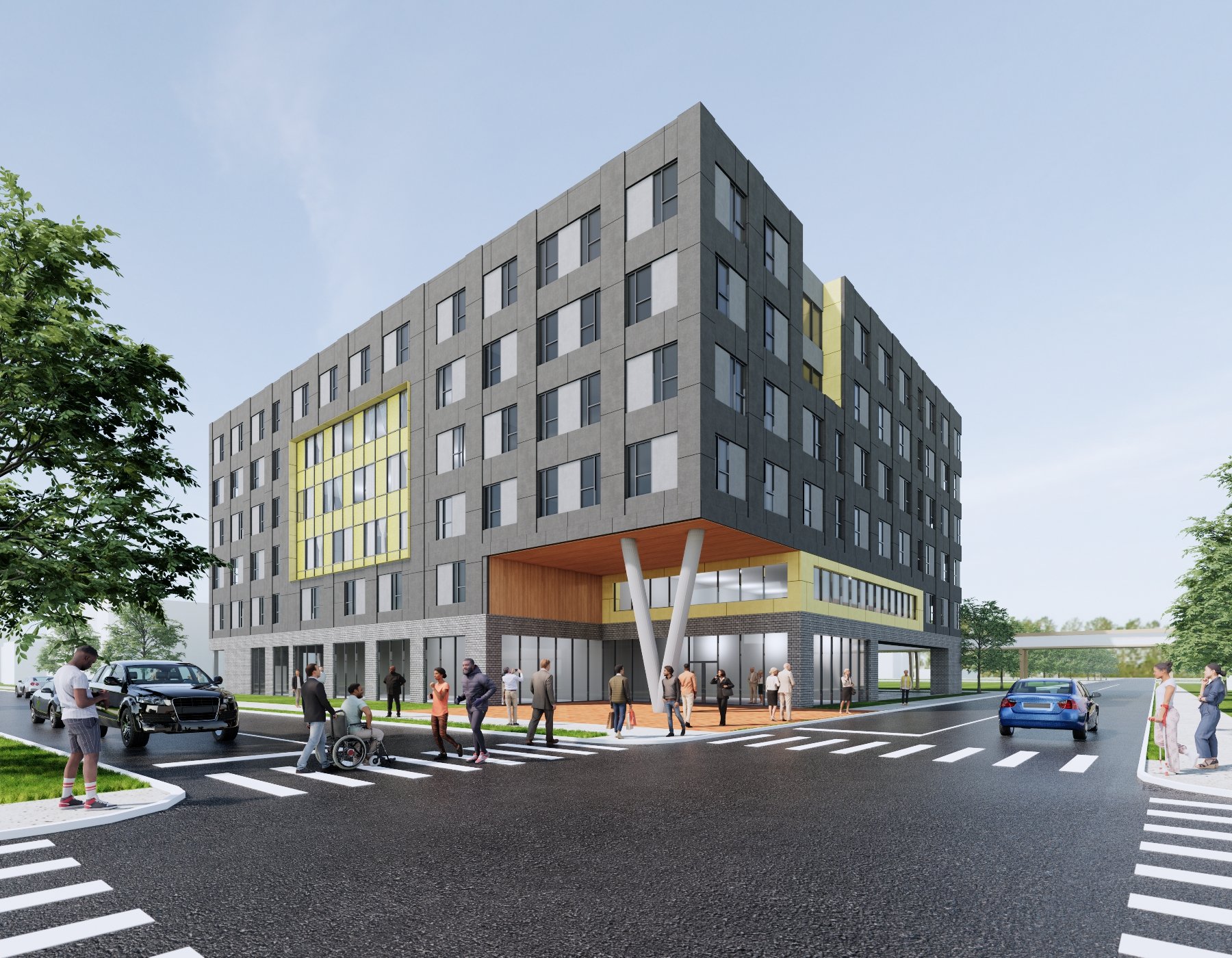Announcing “Abrams Intergenerational Village”
Chicago’s first intentional building for seniors, grandfamilies, students
The Renaissance Collaborative, Inc. (TRC) and Housing Opportunities & Maintenance for the Elderly (H.O.M.E.) announce plans to build Abrams Intergenerational Village, a 71-unit affordable and intergenerational residence in Chicago’s Washington Park neighborhood. Together, TRC and H.O.M.E. combine decades of experience to create a new model of community that celebrates an old concept: life does not segregate by age.
Patricia Abrams, the founder and Executive Director of TRC, has led the charge to create mutually supportive housing for grandparents raising dependents, or “grandfamilies,” for nearly twenty years following a community outcry for grandfamily support. Under a Chicago Community Trust fellowship, she traveled the country to study models to bring back to the south side. In 2010, TRC, a community-based organization located in Bronzeville, established the first building block with “Senior Village 1,” a HUD-funded senior building on the corner of 53rd Street and South Calumet Avenue. Abrams intended to complement Senior Village 1 with newly constructed grandfamily housing on neighboring city-owned land. Drawing on the West African “Boa Me Na Me Mmoa Wo” symbol of cooperation and interdependence, Abrams envisioned “a community of grandparents, grandchildren, and independent seniors that can help each other achieve their goals and reach their full potential, maximizing their quality of life.”
A dream got closer to reality in 2019, when Abrams and Gail Schechter, then the new director of H.O.M.E., started talking to one another about their similar organizational goals of new intergenerational housing on the south side. “We couldn’t be more pleased to work with TRC to solve a housing need by creating community, utilizing and celebrating everyone’s gifts at every age,” says Schechter.
In 1983 with the Pat Crowley House rehab of an older building in Chicago’s Edgewater neighborhood, H.O.M.E. pioneered an innovative intergenerational housing model of shared living and dining that intentionally brings together seniors, younger adults living and working as Resident Assistants, and families with children under the same roof. With the Nathalie Salmon House (1994), H.O.M.E. constructed a building with a mix of private apartments and, on the top
floor, “Good Life Senior Residences,” structured as family-style shared living. Salmon House is the prototype for the new building.
Affirms Alderwoman Pat Dowell, “TRC and H.O.M.E. are both wonderful organizations that do outstanding work with senior populations. It brings me great pride to support the Abrams Intergenerational Village project, which will undoubtedly improve the lives of countless seniors, children, and young adults in the 3rd Ward.” The development would contribute significantly to the City of Chicago’s Bronzeville/ Washington Park community area strategy for stabilization.
According to the DePaul Institute for Housing Studies, more than a quarter of Washington Park’s land is vacant; and in contrast to Chicago as a whole, the population of seniors aged 65 and older in the neighborhood has declined (a 16 percent drop between 2012 and 2019) while those who remain are more impoverished. With the Obama Center under construction, Washington Park groups are concerned that long-time residents will face new displacement pressures. In applying TRC’s and H.O.M.E.’s “village” concept of community development to Washington Park, both people and place will be allowed to flourish.
TRC and H.O.M.E. engaged Prim Lawrence Group to help get Abrams Intergenerational Village off the ground. The two groups selected Moody Nolan, the nation’s largest Black-owned architecture firm, following a competitive process, to build Abrams Intergenerational Village. The building, which will have majority ownership by TRC with co-ownership by H.O.M.E., will be a 71-unit, 6-story new construction building composed of:
21 apartments for grandfamilies (grandparents aged 55+ raising grandchildren) scattered throughout the building in two- and three-bedroom apartments.
12 low-income seniors living in studios while dining communally on one dedicated floor (“Good Life Senior Residences”), which would also include grandfamilies.
32 seniors in private studios and two-bedroom apartments.
6 college students aged 18-24 experiencing homelessness would live in private studios and would provide light assistance and companionship to the Good Life seniors.
Community rooms on the ground floor and accessible gardens and play areas ensure that building and the neighborhood are seamlessly integrated.
Fitness, library, and computer rooms accessible to all.
On-site social work staff would provide support services for children and seniors.
TRC and H.O.M.E. are in the process of seeking public and private donations and financing for what is anticipated to be a $33 million development. It would be affordable in perpetuity.
https://www2.illinois.gov/IISNews/26614-Governor_Pritzker_Awards_$26_million_in_Low-Income_Housing_Tax_Credits_for_Affordable_Housing.pdf



